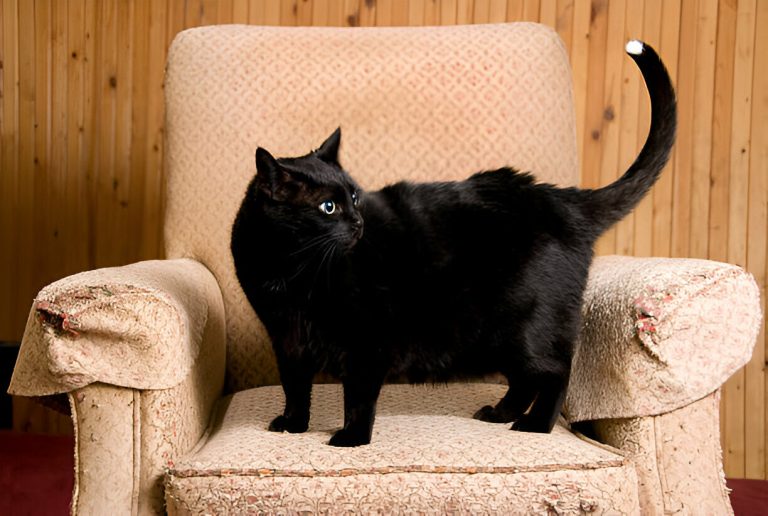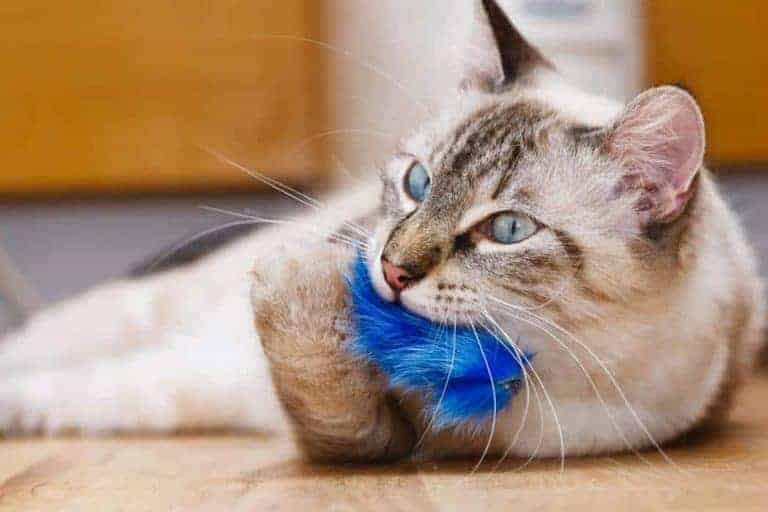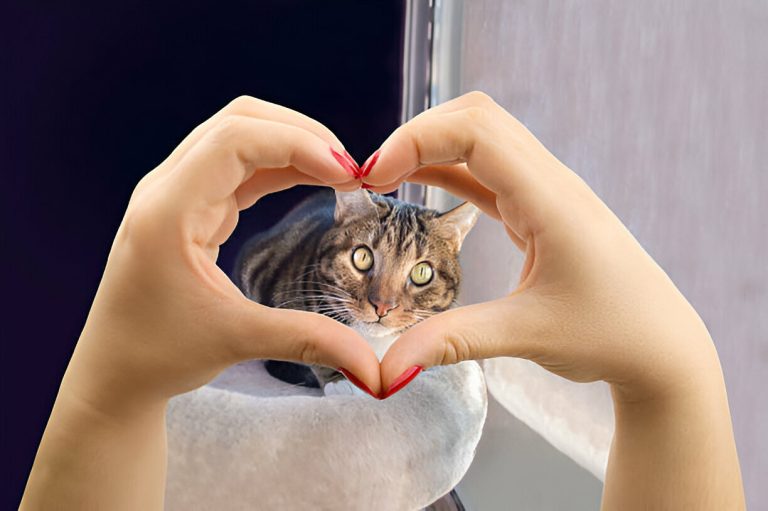Bravecto for Cats Side Effects: What You Need to Know for Pet Safety

Developed as a flea and tick preventative, Bravecto for cats contains the active ingredient Fluralaner – an insecticide and acaricide belonging to the isoxazoline group. This compound, specifically formulated for cats, is designed to disrupt the nervous system of fleas and ticks, resulting in their death. Notably, Fluralaner’s application is not universally innocuous, as it has the potential to provoke a variety of side effects in its feline recipients. While rigorously tested to ensure it meets safety standards, the administration of Bravecto requires a mindfulness of its possible consequences to feline health.
Despite its efficacy in the eradication of unwelcome ectoparasites, Bravecto ingestion can induce an array of adverse reactions in felines. Some commonly reported Bravecto for cats side effects include vomiting, alopecia (hair loss), diarrhea, lethargy, decreased appetite, and pruritus (itchiness). Of particular curiosity is a rare but more severe side effect, neurologic abnormalities, which could surface in forms such as seizures, muscle tremors, or ataxia (lack of muscle coordination). The actual incidence rate of such experiences is a focal point that garners the attention and concern of both pet owners and the veterinary community alike, reinforcing the importance of understanding these potential risks when safeguarding the well-being of our feline companions.
In the forthcoming paragraphs, detailed insights into the prevalence of side effects, tips for monitoring feline patients post-administration, and guidelines for veterinary follow-up will be provided. This information pertains directly to caretakers who prioritize informed decisions regarding their cats’ healthcare regimes. The subsequent discussion will methodically unpack the nuances of recognizing early signs of side effects, the protocols for managing them, and the circumstances under which veterinary intervention becomes necessary. All with the intention of equipping cat owners with the practical knowledge required to navigate the complexities of preserving their pets’ health while addressing pest prevention.
Reflecting on the synthesis of Bravecto’s utility and potential side effects, it becomes increasingly vital for pet owners and veterinarians to blend vigilance with their preventive strategies. Engaging in collaborative discourse about these pharmaceutical interventions not only underscores the commitment to pet safety but also propels advancements in veterinary medicine, ensuring the onus of responsibility is shared and the banner of pet well-being is upheld. Thus, the role of post-application care and client education canters into the limelight, outlining a blueprint for responsible pet care in the context of pharmaceutical prophylactics.
- Bravecto, a flea and tick preventative medication for cats, can cause side effects which are generally rare but can include gastrointestinal issues such as vomiting and diarrhea, as well as neurological symptoms like seizures and lethargy.
- Most cats tolerate Bravecto well, but it’s important to monitor your pet closely after administration, especially the first time, to identify any adverse reactions quickly.
- An allergic reaction to Bravecto could result in skin irritation, itching, or hives, warranting immediate veterinary attention.
- Bravecto should only be given to cats who meet the appropriate age and weight requirements as indicated by the product’s guidelines.
- It’s crucial to follow the prescribed dosage instructions and avoid overdosing, as this could increase the risk of side effects.
- Consultation with a veterinarian before starting Bravecto is advised, especially for cats with a history of seizures or other health issues.
- Pet owners should be aware that side effects may not appear immediately and to keep a watchful eye on their cat’s behavior and health over several weeks following treatment.
- Reporting any experienced side effects to your veterinarian can help track the safety and efficacy of Bravecto, and aid in making informed decisions about ongoing flea and tick prevention strategies.
- If serious side effects are witnessed, a veterinarian may advise discontinuing Bravecto and provide supportive care or alternative treatments to manage the symptoms.
- Maintaining an open dialogue with your vet regarding the health and reactions of your cat to Bravecto can ensure the best outcomes for your pet’s safety and well-being.
- While Bravecto is a convenient option due to its long-lasting effectiveness (up to 3 months), it’s not without its risks, and pet owners should weigh the benefits against the potential for side effects.
- Ensuring that Bravecto is stored correctly and kept out of the reach of children and pets can prevent accidental ingestion or misuse.

Are There Any Side Effects in Cats from Using Bravecto?
When it comes to flea and tick prevention in cats, Bravecto is a commonly prescribed treatment. However, like any medication, it’s important to consider the potential side effects. Bravecto for cats is an FDA-approved topical solution or chew that offers up to 3 months of protection against fleas and ticks. Despite its effectiveness, some feline companions may experience adverse reactions. This article delves into Bravecto’s side effects in cats, providing vital information for pet owners prioritizing the safety of their furry friends.
Understanding Bravecto and Feline Pharmacology
Bravecto for Cats – A long-acting flea and tick treatment medication available in chewable and topical forms. Fluralaner – The active ingredient in Bravecto that acts on the nervous system of fleas and ticks, leading to their death. Side Effects – Unwanted symptoms or reactions occurring as a result of taking a medication. Pharmacokinetics – The study of how a drug is absorbed, distributed, metabolized, and excreted from the body. Pharmacodynamics – The study of the biochemical and physiological effects of drugs on the body.
Bravecto works by utilizing the compound fluralaner, which disrupts the nervous system of insects and arachnids, providing prolonged protection against fleas and ticks. Its pharmacokinetics are designed to allow for extended effectiveness, typically up to 12 weeks. However, potential side effects of Bravecto for cats include gastrointestinal disturbances, such as vomiting or diarrhea, neurological issues, such as seizures or tremors, and skin reactions at the application site. The importance of considering a cat’s health history and current condition before administering Bravecto cannot be overstated, as this can influence how the medication is processed and the likelihood of adverse effects.
Feline Nutrition: Essentials for a Balanced Diet
Understanding the dietary needs of domestic cats is imperative for their long-term health and vitality. Cats are obligate carnivores, which means that they require a diet primarily composed of meat to thrive. A balanced feline diet should be rich in high-quality protein sources, such as chicken, turkey, fish or beef, which provide the amino acids necessary for muscle maintenance and overall growth. Taurine, an essential amino acid found only in animal tissue, is particularly crucial for cats’ cardiovascular, reproductive, and visual health.
Fats are another essential component of a cat’s diet, serving as a dense energy source and facilitating the absorption of fat-soluble vitamins, such as A, D, E, and K. Omega-3 and Omega-6 fatty acids are particularly important for maintaining healthy skin and a glossy coat. In terms of carbohydrates, while not essential for their survival, they can be included in small amounts in a cat’s diet. However, easily digestible carbs like rice or vegetables should be favored over grains, which some cats may find difficult to process.
Lastly, access to clean, fresh water is non-negotiable for maintaining feline health. Proper hydration aids in digestion, circulation, and waste elimination.
Choosing Safe Tick and Flea Preventatives for Felines
Pet owners have myriad options when it comes to tick and flea preventatives for their cats. Safety and efficacy are the top considerations in choosing the right product. Topical treatments, often provided in small vials for application on the cat’s skin, provide a popular choice due to their ease-of-use and long-lasting effect – usually up to one month. Ingredients in these solutions typically include insecticides that target the nervous system of pests, effectively eliminating them upon contact.
Another option is oral medications that either prevent the development of fleas and ticks or eliminate them after they have bitten the cat. These medications can be convenient for owners whose pets may not tolerate topical treatments well. Collars impregnated with pest-repelling chemicals offer a passive but constant method of protection, but caution must be taken to choose collars designed specifically for cats, as their sensitivity to certain compounds can differ from other animals.
No matter the type of preventative chosen, pet owners should always consult with a veterinarian to ensure that the particular product is safe and suitable for their cat, especially with regard to age, weight, and health status.
Fostering Environmental Enrichment for Indoor Cats
Cats confined to the indoors benefit greatly from environmental enrichment – activities and structures that encourage natural behaviors such as climbing, hunting, and scratching. Cat trees and perches cater to felines’ instinctive desire to gain a higher viewpoint and observe their surroundings. These structures are typically outfitted with platforms at different levels, cozy hideaways, and dangling toys that promote active play and exercise.
Scratching posts are also indispensable in a cat’s environment, addressing the need to mark territory, condition claws, and stretch muscles. Owners should provide a variety of posts with different textures, such as sisal rope and soft carpet, placed throughout the home to discourage scratching on furniture.
Interactive toys that mimic the movement of prey, like laser pointers and motorized mice, can stimulate the cat’s hunting instincts and provide mental stimulation. Food puzzles are particularly valuable in simulating the challenge of foraging, thereby slowing down the feeding process and helping to prevent overeating and obesity.
Regular interaction with humans, through petting, grooming, or play, can further enrich an indoor cat’s environment. Not only does this help in socializing the cat, but it also fortifies the bond between pet and owner.
1. What is Bravecto and how is it used in cats?
Bravecto is a flea and tick preventative medication that is used to protect cats against infestations. It is available in a topical solution that is applied to the skin on the back of the cat’s neck. The active ingredient, fluralaner, is absorbed into the bloodstream and provides protection against fleas and ticks for up to 12 weeks. Bravecto works by disrupting the nervous system of the parasites, effectively eliminating them.
The medication is typically prescribed by veterinarians and is known for its extended duration of action. Cat owners appreciate the convenience of not having to apply monthly treatments. However, as with any medication, there are guidelines and precautions to follow to ensure the safety and well-being of the pet receiving the treatment.
2. Can Bravecto for cats cause side effects?
Yes, like all medications, Bravecto for cats can cause side effects, although they are generally rare and most cats tolerate the medication quite well. Some reported side effects include vomiting, itching, diarrhea, hair loss, decreased appetite, lethargy, and agitation. These side effects are usually mild and temporary, resolving without the need for further medical intervention.
If you notice any persistent or serious side effects after administering Bravecto to your cat, it’s important to contact your veterinarian immediately. Severe reactions could be indicative of an allergic response or an underlying health issue that requires professional attention to ensure the safety and health of your pet.
3. How long after application do Bravecto’s side effects last?
The duration of potential side effects from Bravecto in cats can vary. Mild side effects like itching or gastrointestinal upsets may resolve within a few days after application without treatment. More persistent side effects should be carefully monitored and may warrant a vet visit if they last beyond a couple of days.
If a cat experiences severe side effects, they may persist until the medication is fully metabolized and eliminated from the body, which could take several weeks. Always consult your veterinarian if side effects are concerning, they persist, or they worsen over time, so your pet can receive appropriate care.
4. Are there any long-term side effects associated with using Bravecto for cats?
Long-term side effects from the use of Bravecto in cats are very rare when used according to the prescribing veterinarian’s guidelines. Research and post-marketing surveillance have shown that Bravecto is generally safe for cats when administered at the recommended dosages and intervals. However, long-term use of any medication could potentially lead to issues, so it’s important to monitor your pet’s health over time.
As long-term studies and observation continue, veterinarians and pet owners contribute to the understanding of the medication’s safety profile. Any concerns about possible long-term effects should be discussed with your veterinarian, who can provide guidance based on your cat’s unique health history and needs.
5. What should I do if my cat experiences side effects from Bravecto?
If you suspect your cat is experiencing side effects from Bravecto, the first step is to observe the severity and duration of the symptoms. Mild and short-lived symptoms may not require immediate veterinary intervention but should be noted and monitored. For any severe or persistent symptoms that cause distress to your cat, or if you are concerned at any point, you should contact your veterinarian as soon as possible.
Your veterinarian can evaluate your cat’s symptoms and overall condition and may suggest supportive care, such as fluids for dehydration caused by vomiting or diarrhea or medications to alleviate severe itching. In some cases, they may advise discontinuing the use of Bravecto and choosing an alternative flea and tick prevention method.
6. Can Bravecto be used in cats with existing health conditions?
Bravecto should be used cautiously in cats with existing health conditions. Your veterinarian will evaluate your cat’s overall health and specific medical conditions before prescribing Bravecto. Conditions such as liver or kidney disease, neurological disorders, or a history of seizures may influence the decision to choose Bravecto as a preventative treatment, as these can potentially increase the risk of side effects or interactions with other medications.
It is essential to provide your veterinarian with a complete medical history, including any current medications, before starting your cat on Bravecto. This enables your veterinarian to make an informed decision about the risk-benefit balance of using the medication and to monitor your cat more closely for any adverse reactions.
7. Is there an age or weight restriction for cats using Bravecto?
Bravecto is approved for use in cats and kittens that are at least 6 months of age and weigh at least 2.6 pounds. Kittens younger than 6 months or weighing less have not been extensively studied for the use of Bravecto, and therefore, its safety and effectiveness in this population have not been established. It is important to adhere to these age and weight restrictions to minimize the risk of side effects.
Before applying Bravecto, your veterinarian will likely weigh your cat to ensure accurate dosing, which is crucial for both efficacy and safety. Following the age and weight guidelines helps protect young kittens from exposure to medication that their developing bodies may not tolerate well.
8. How can I minimize the risk of Bravecto side effects in my cat?
To minimize the risk of Bravecto side effects, always use the medication exactly as prescribed by your veterinarian. This includes applying the correct dosage based on your cat’s weight and adhering to the recommended treatment intervals. Do not combine Bravecto with other flea and tick products unless your veterinarian advises you to do so, as this could increase the risk of adverse reactions.
Additionally, monitor your cat closely after applying Bravecto, especially if it is their first time using the medication. Keep an eye out for any changes in behavior, appetite, or health, and report anything unusual to your veterinarian. By being vigilant and proactive, you can help ensure your cat remains safe while benefiting from Bravecto’s flea and tick protection.
9. Are certain breeds of cats more susceptible to Bravecto side effects?
Currently, there is no conclusive evidence to suggest that specific cat breeds are more susceptible to side effects from Bravecto. However, individual cats, regardless of breed, may have varying sensitivities to medications. As with any treatment, there is always a risk of an individual adverse reaction, and this will depend on the unique physiology and health of the cat rather than its breed.
When prescribing Bravecto, your veterinarian will consider all factors, including breed predispositions to certain health conditions, that might affect the cat’s reaction to the medication. Always discuss your cat’s health history in detail with your vet to ensure the safest possible prevention strategy.
10. What alternatives exist if my cat cannot tolerate Bravecto?
If your cat cannot tolerate Bravecto, there are several alternative flea and tick preventatives available that come in various forms, such as other topical solutions, oral medications, injections, or even flea collars. Each product has its own set of potential side effects and efficacy rates. It is important to review these options with your veterinarian to determine which is best for your cat’s individual needs and health status.
Your vet may suggest a different active ingredient or a different mode of application to reduce the chances of an adverse reaction. Lifestyle and environmental factors also play a role in selecting the most appropriate flea and tick prevention method. Ultimately, working closely with your veterinarian will help you find a suitable and safe option for your cat.
Final Thoughts on Bravecto for Cats Side Effects
Understanding Bravecto for cats side effects is crucial for pet owners who prioritize their feline friends’ health and safety. The key points to remember include recognizing common side effects such as vomiting, diarrhea, lethargy, and reduced appetite, as well as rarer but more serious reactions that may manifest in individual cases. Monitoring your cat after administration is essential to ensure their well-being and to swiftly address any adverse reactions. It’s also important to note that Bravecto should only be given to cats with a vet’s prescription and following the appropriate dosage instructions. While Bravecto for cats side effects are not overly common, being informed and proactive in discussing this treatment with your veterinarian will help maintain the safety and comfort of your cat. Always report any side effects to the prescribing veterinarian, as they can provide guidance on managing symptoms and adjusting your pet’s flea and tick prevention regimen if necessary.






